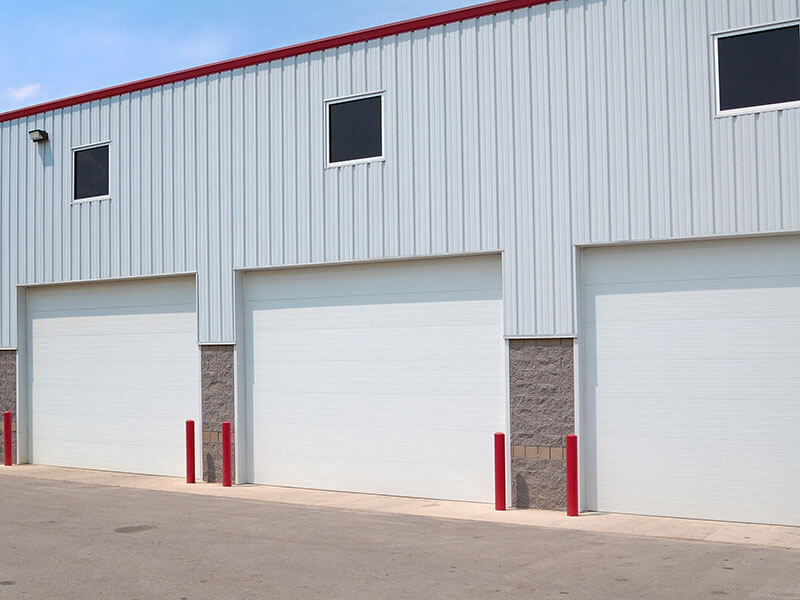Introduction
Garage doors are an essential component of any home, offering security and convenience. However, one of the most common problems homeowners face is broken garage door springs. These springs bear the weight of the door and facilitate its opening and closing. When they break, it can leave your garage door inoperable, causing frustration and inconvenience. In this comprehensive guide, we'll dive deep into everything you need to know about replacing broken garage door springs. From understanding how these springs work to troubleshooting issues with your garage door opener, we've got you covered.
Understanding Garage Door Springs
What Are Garage Door Springs?
Garage door springs are mechanical devices designed to counterbalance the weight of a garage door, allowing it to open and close smoothly. There are two main types: torsion springs and extension springs.
- Torsion Springs: Mounted above the garage door, these springs twist as the door opens or closes. Extension Springs: Located on either side of the door, they stretch and contract during operation.
How Do Garage Door Springs Work?
When you use your garage door opener to lift the door, it’s actually the energy stored in these springs that does most of the work. Torsion springs unwind to lift the door while extension springs expand.
The Importance of Properly Functioning Springs
If these components fail, you'll likely encounter issues like a garage door that won’t close or struggles to open. This can lead not only to inconvenience but also potential safety hazards.
local garage door serviceSigns Your Garage Door Springs Are Broken
Identifying a Broken Spring
There are several telltale signs indicating that your garage door spring may be broken:
- The garage door won’t budge when using the opener. One side of the garage door hangs lower than the other. There's a loud snapping noise when attempting to operate the door.
Why Immediate Action Is Necessary
Ignoring these signs can lead to further damage requiring costly repairs or even complete replacement of your garage door system.
Your Complete Guide to Replacing Broken Garage Door Springs
Replacing broken garage door springs isn’t for everyone; however, if you’re handy with tools and understand basic mechanics, it can be a manageable DIY project. Here’s how you can go about it.
Tools You’ll Need for Replacement
Before starting your project, gather all necessary tools:

- Wrenches Pliers Safety glasses Extension ladder Replacement spring (make sure it's compatible)
Step-by-Step Guide on Replacing Torsion Springs
1. Safety First!
Always wear safety glasses when working with springs as they can snap back unexpectedly.
2. Disconnect Your Garage Door Opener
Unplugging your opener ensures no accidental operation occurs while you're working.
3. Release Tension in Existing Springs
Carefully unwind tension from old torsion springs using a winding bar until all tension is released.
4. Remove Old Springs
Once tension is released, unbolt and remove old springs from their brackets.
5. Install New Torsion Springs
Align new springs with existing brackets and secure them tightly using bolts.
6. Rewind Spring Tension
Using winding bars again, carefully wind tension back into your new torsion springs—this step must be performed meticulously to avoid injury.
7. Reconnect Your Opener
Plug in your garage door opener and test if everything operates smoothly.
Step-by-Step Guide on Replacing Extension Springs
Replacing extension springs follows similar steps but requires special attention due to their different mechanics:
Disconnect your opener. Securely prop up the garage door. Release tension from existing extension springs by pulling down on safety cables. Remove old extension spring hardware. Install new extension spring hardware ensuring proper alignment. Test functionality before reconnecting your opener.Common Mistakes When Replacing Garage Door Springs
Not Following Safety Protocols
Neglecting safety can lead to serious injuries—always prioritize personal safety!
Improper Sizing of Replacement Springs
Ensure that replacement parts match original specifications; otherwise, you risk further malfunctions.
Failing to Wind Tension Correctly
Incorrect tension winding can cause premature wear or even catastrophic failure upon use—be meticulous!
Garage Door Troubleshooting After Spring Replacement
Even after successfully replacing broken springs, issues may arise with your garage door opener or overall function:
Why Won't My Garage Door Close?
If you've replaced your sprung correctly but find that "garage door won’t close," check for obstructions on sensors or misalignment in tracks.
Garage Door Service Moreton Bay Options
For extensive concerns beyond DIY repairs, consider hiring professionals through services like "garage door service moreton bay" for expert guidance and repairs.
FAQ Section
1. What causes my garage door spring to break?
Springs have a finite lifespan; they wear out due to repeated stress over time or rusting from weather exposure.
2. How often should I replace my garage door springs?
Typically every 7–9 years depending on usage frequency; however regular inspections will provide better insight.
3. Can I replace just one spring?
While feasible, we recommend replacing both at once for balanced performance over time.
4. How do I know which type of spring I need?
Consult manufacturer guidelines or seek professional advice tailored specifically for your model.
5. Is it safe to operate my garage without functional springs?
No! Operating a malfunctioning system poses severe risks including injury and property damage; always address issues promptly!
6. Should I hire a professional for installation?
If you're unsure about DIY procedures or lack experience with heavy garage door repair services machinery like this—yes! Safety should always come first!
Conclusion
In conclusion, understanding how to replace broken garage door springs empowers homeowners not only to save money but also enhances their ability to maintain their properties effectively. Whether you're looking at routine maintenance or troubleshooting complex issues related to “garage doors” and “garage doors openers,” knowledge is key! Remember that while replacing these crucial components might seem daunting at first glance—proper preparation combined with our detailed guide will make this task achievable even for beginners!
So why wait? Equip yourself with this complete guide today! Happy repairing!